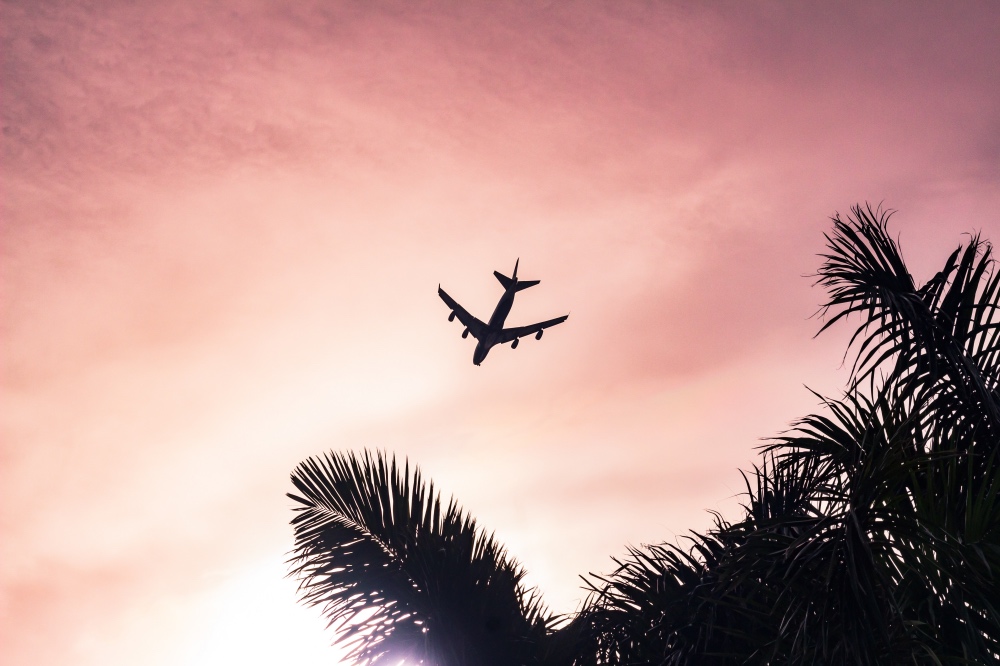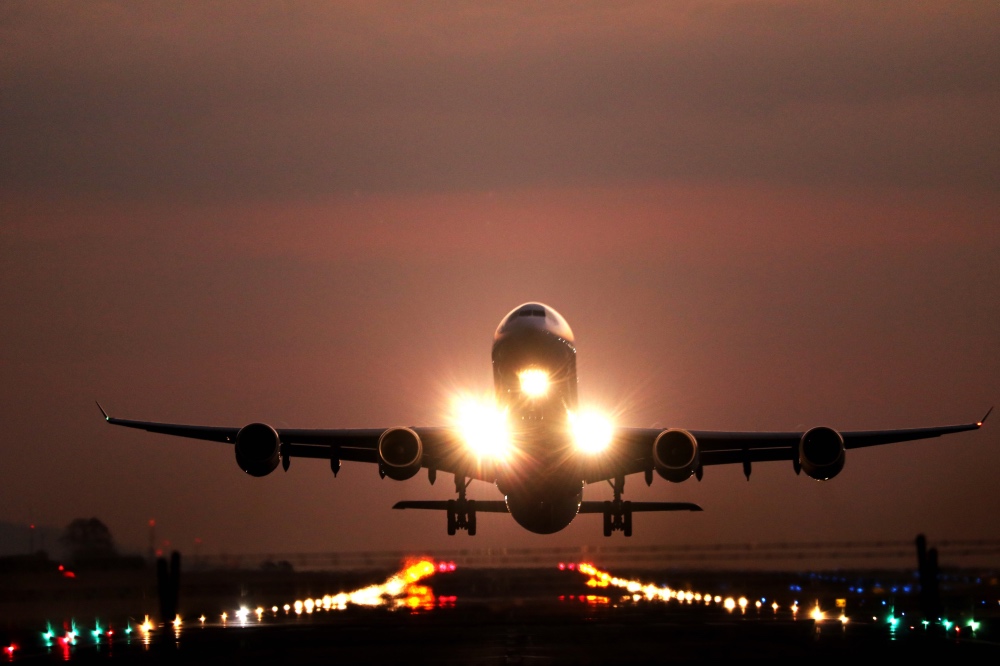
SEBASTIEN MALO and SONIA ELKS, of Thomson Reuters Foundation, report on the concept of ‘flygskam’…
New York City, US/London
Thomson Reuters Foundation
As world leaders met in New York last week, one question kept coming up at climate change events: How did you get here?
Swedish teenage activist Greta Thunberg made headlines for deciding to sail rather than fly to New York for the climate summit that kicked off the United Nations’ key annual meeting.
But world leaders and delegates arrived by plane in their thousands, prompting a gathering of tourism executives in New York to ponder how to address the fact that flying adds to the greenhouse gas emissions responsible for global warming.
“Flight shaming” – that came from the Swedish-born concept of “flygskam” – had “firmly entered the consciousness of Europeans”, said the event’s program, a climate-themed gathering organised by the World Travel and Tourism Council.

PICTURE: Eduardo Velazco Guart/Unsplash
“If there’s an elephant in the room…of course it’s aviation,” Norway’s Minister for Climate and Environment Ola Elvestuen told the event.
Commercial flying currently accounts for about two per cent of global carbon emissions and about 12 per cent of transport emissions, according to data cited by the Air Transport Action Group.
“If there’s an elephant in the room…of course it’s aviation.”
– Ola Elvestuen, Norway’s Minister for Climate and Environment, speaking at the World Travel and Tourism Council event last week.
By 2020, emissions from global international aviation are projected to be about 70 per cent higher than in 2005 due to rising travel demand. Passenger numbers are forecast to double to 8.2 billion between 2017 and 2037, according to IATA.
International airlines are counting on a global carbon offsetting plan discussed in Montreal, Canada, last week to cap CO2 emissions from air travel at 2020 levels.
Some environmentalists, however, argue it is not necessary to give up air travel altogether but to convince travelers used to flying on minibreaks several times a year to change habits.
“What we need to do is get into a collective cultural mindset where we understand that air travel is a scarce resource,” said Leo Murray of the British 10:10 Climate Action charity.
“It’s frequent flying that needs to change,” he added.
But with the UN gathering underway, travel website fromAtoB published research about international flights taken by 15 of the heads of the world’s 20 largest economies in 2018. Some countries refused to give travel information.
It found Japan’s Prime Minister Shinzo Abe, who came to New York for the United Nations General Assembly, was responsible for the most travel among the heads of the G20 nations.
He took 38 flights in his Boeing 747-400 in 2018, traveling 128,000 miles (207,000 kilometres) and emitting nearly 14,500 tonnes of CO2 gas, researchers calculated.
US President Donald Trump came second, with 81,400 miles (131,000 kilometres) flown in 2018 with 16 international visits.
Among European leaders, German Chancellor Angela Merkel took the most flights, with 83, but most were short haul in Europe.
According to the European Commission, a return flight between London and New York generates roughly the same level of emissions as heating a European home for a whole year.
The website did not calculate emissions from the leaders of the UN’s 193 member states in New York this week but the issue of flying to climate events has started to hit the spotlight.
Earlier this year, British actor Emma Thompson was criticised for taking a first-class flight from the United States to Britain to take part in climate change protests.
Celebrities such as Britain’s Prince Harry and US actor Leonardo DiCaprio, who preach environmentalism while also taking private jet flights, have also been accused of hypocrisy.

PICTURE: Josue Isai Ramos Figueroa/Unsplash
Sweden has seen the clearest sign of a “Greta effect”, with plane passengers tailing off in as train journeys rise.
The country’s airport operator reported passenger numbers have by four per cent dipped in 2019 – and by eight per cent particularly for shorter domestic flights – while the state-owned train operator sees reported a rise of eight per cent in the first quarter of the year.
The number of inter rail travel passes rose by +40 per cent across Scandinavian countries in 2018, said the scheme’s operator Eurail, while a recent survey of passengers found most said climate issues influenced their decision to travel by train.
“Although we cannot link our growth only to the decision of people to fly less we do see an increasing trend in train travel, especially when it comes to family and senior travellers,” said Carlo Boselli, the general manager at Eurail.
“Although we cannot link our growth only to the decision of people to fly less we do see an increasing trend in train travel, especially when it comes to family and senior travellers.”
– Carlo Boselli, the general manager at Eurail.
He urged for more policies to support train travel, adding “changing people’s travel behaviors is not something that happens overnight.”
In New York Laura Perez-Arce, a director at Mexican grassroots environmental non-profit, the Sierra Gorda Ecological Group, said she was “frustrated” to have to take an international flight to UNGA “in order to be heard”.
“I feel flight shame, I wouldn’t want to be here,” she said, but added that showing up in person had opened much needed funding prospects and a multi-day car trip was not viable.
Speaking at the WTTC event, Christoph Wolff, who is head of mobility industries and system initiatives at the World Economic Forum, said it was difficult to juggle the needs to attend major events like UNGA and cut carbon emissions.
Some airlines let customers estimate their emissions and contribute to carbon offset programs to compensate for them.
“The world wants to fly and wants to go to faraway places,” he said, while acknowledging greener fuels, like synthetic hydrocarbons, could push up the cost of flying by up to 40 per cent.





